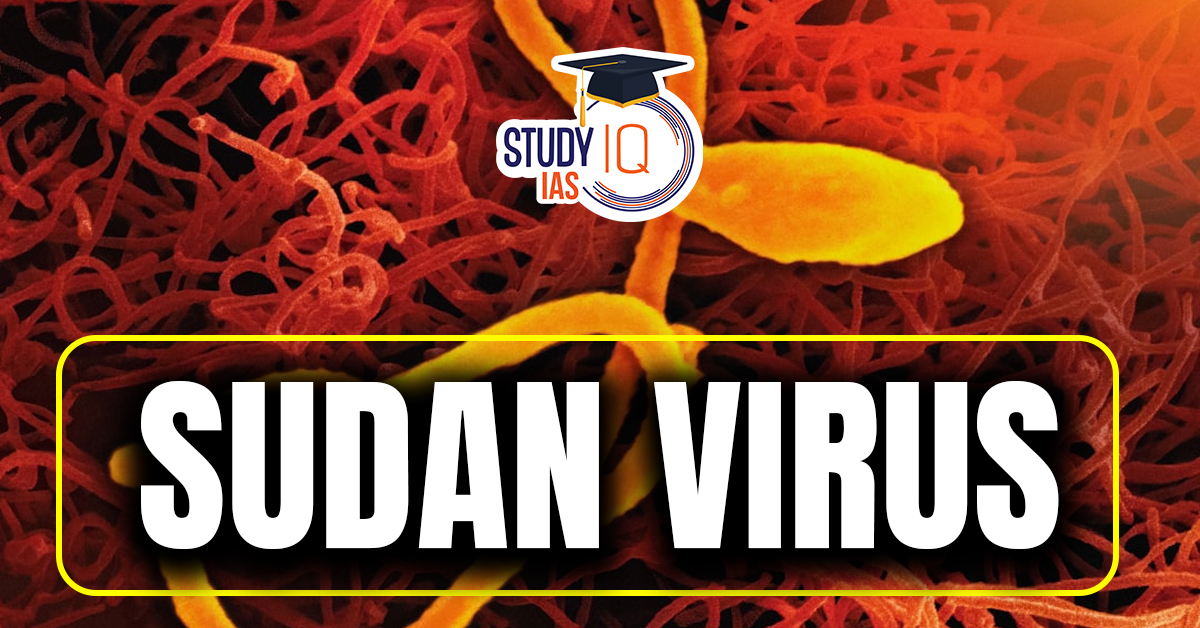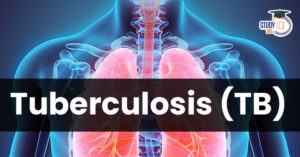Table of Contents
In coordination with the World Health Organization (WHO), the Ugandan Government recently confirmed an outbreak of Sudan virus disease (SVD). This deadly viral disease is induced by the Sudan virus (SUDV), which is a close relative of the Ebola virus (EBOV). Due to its high case-fatality ratio and absence of specific treatment, this outbreak raises serious global public health concerns.
What is Sudan Virus?
Sudan virus (SUDV) belongs to the Filoviridae family and is classified under the Ebolavirus genus. It is one of the six known Ebola virus species that cause severe hemorrhagic fever in humans. The first recorded outbreak of Sudan Virus Disease (SVD) occurred in 1976 in southern Sudan (now South Sudan). Since then, several outbreaks have been reported across East and Central Africa, with case fatality rates ranging from 41% to 100% depending on the outbreak.
Transmission of Sudan Virus
Sudan virus spreads through both zoonotic (animal-to-human) and human-to-human transmission.
1. Animal to Human Transmission
- The natural reservoir of Sudan virus is not yet fully confirmed, but it is suspected to be fruit bats, similar to the Ebola virus.
- Humans may get infected through direct contact with infected animals, such as non-human primates or bats.
- Possible routes include handling or consuming contaminated bushmeat or exposure to bat secretions.
2. Human to Human-to-human transmission
- Direct contact with bodily fluids (blood, saliva, vomit, sweat, urine, feces, breast milk, or semen) from an infected person.
- Contact with contaminated objects or surfaces, such as bedding, needles, or medical equipment.
- Healthcare workers and family members caring for infected individuals are at high risk.
- Sexual transmission has also been reported, as the virus can persist in bodily fluids for months after recovery.
Symptoms of Sudan Virus Disease (SVD)
The incubation period (time from infection to symptom onset) ranges from 2 to 21 days. Symptoms progress in the following stages:
Early Symptoms (Day 1-7)
- Sudden high fever
- Severe headache and muscle pain
- Fatigue and weakness
- Sore throat
- Loss of appetite
Advanced Symptoms (Day 7-14)
- Vomiting and diarrhea (may contain blood)
- Severe abdominal pain
- Skin rashes
- Bleeding from gums, nose, or internal organs (hemorrhagic symptoms)
- Organ failure and shock (in severe cases)
Due to the non-specific nature of early symptoms, SVD is often misdiagnosed as malaria, typhoid fever, or dengue fever, leading to delayed treatment and further spread.
Diagnosis of Sudan Virus Disease
Since symptoms resemble other infectious diseases, laboratory tests are essential for confirmation. Common diagnostic methods include:
- RT-PCR (Reverse Transcriptase Polymerase Chain Reaction): Detects viral RNA in blood or body fluids.
- ELISA (Enzyme-Linked Immunosorbent Assay): Identifies antibodies against Sudan virus.
- Virus Isolation: Culturing the virus in specialized laboratories (rarely used due to biosafety risks).
Treatment and Prevention
Treatment
Currently, there are no approved vaccines or antiviral drugs for Sudan Virus Disease (SVD). Treatment focuses on supportive care to manage symptoms and improve survival chances. This includes:
- Intravenous fluids and electrolytes to prevent dehydration.
- Oxygen therapy for respiratory distress.
- Blood transfusions to manage hemorrhagic symptoms.
- Pain relievers and anti-nausea medications for symptom relief.
- Experimental therapies, such as monoclonal antibodies or repurposed antiviral drugs, are being studied.
Prevention Strategies
Due to the high fatality rate, strict preventive measures are necessary:
- Avoid contact with infected individuals and their bodily fluids.
- Use personal protective equipment (PPE), especially for healthcare workers.
- Safe burial practices for deceased victims to prevent further transmission.
- Avoid consuming bushmeat or handling dead animals in outbreak areas.
- Quarantine and monitoring of exposed individuals for early detection.
Sudan Virus vs. Ebola Virus – Key Differences
| Feature | Sudan Virus (SUDV) | Ebola Virus (EBOV) |
|---|---|---|
| Family | Filoviridae | Filoviridae |
| First Identified | 1976 (Sudan) | 1976 (Democratic Republic of Congo) |
| Natural Reservoir | Possibly fruit bats | Fruit bats (Pteropodidae family) |
| Case Fatality Rate | 41% – 100% | 25% – 90% |
| Approved Vaccine | None | Yes (rVSV-ZEBOV) |
| Outbreak Frequency | Less frequent | More frequent |
Recent Outbreaks and Global Response
- 2022 Uganda Outbreak: The latest outbreak of Sudan Virus Disease was confirmed in Uganda, prompting emergency response efforts by WHO and the Ugandan government.
- Previous Outbreaks: Notable outbreaks occurred in Sudan (1976, 1979), Uganda (2000, 2011, 2012), and South Sudan (2004).
- WHO and CDC Response: Public health agencies are working to contain the outbreak by isolating cases, tracing contacts, and deploying mobile laboratories.
Conclusion
Sudan Virus Disease (SVD) remains a serious public health threat due to its high fatality rate, rapid spread, and lack of vaccines or antiviral treatments. The recent outbreak in Uganda highlights the urgent need for global surveillance, research, and preparedness to combat future outbreaks effectively. Until vaccines and targeted treatments become available, public awareness, early detection, and strict infection control measures remain the best defense against the Sudan virus.


 AI and its Regulation in India, Limitati...
AI and its Regulation in India, Limitati...
 Tuberculosis (TB), Symptoms, Causes and ...
Tuberculosis (TB), Symptoms, Causes and ...
 Places in News for UPSC 2025 for Prelims...
Places in News for UPSC 2025 for Prelims...





















